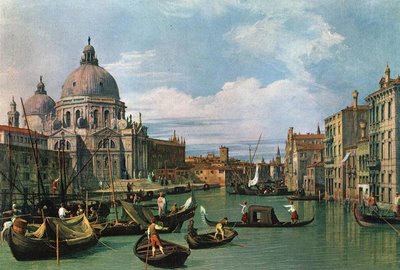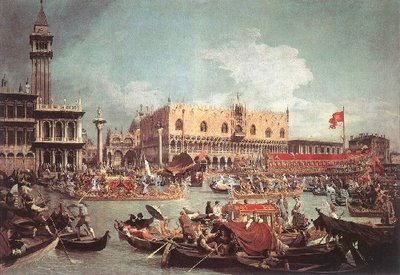Canaletto: Townscapes

Canaletto (1697-1768) is one of my favourite artists. When I was working split-shifts in Soho, in London, I spent many an afternoon browsing the National Gallery .
One of the many painters to capture my interest was Canaletto. The painting here is called Grand Canal and the Church of Salute. His broad and lively scenes of the life and architecture of Venice and London are simply wonderful. His paintings abound with characters going about their daily lives or participating in grand occasions, while the main subject, the city around them, is captured in light and colour in glorious detail.

Having come to the attention of English tourists visiting Venice, he was soon selling many of his works to them. He visited England in 1746 and was soon painting townscapes of London. The painting here is called Westminster and, as you can see, the painting captures the architecture in remarkable detail and also imparts the English love of pomp and ceremony.
When you stand in front of one of Canalettos' large canvases you can appreciate the detail of his work. The field of depth and perspective allows the viewer to focus in on distant characters and see each of them at work and play or simply viewing the same spectacle that Canaletto himself is observing.

The painting here is called Regata. Again Canaletto has captured for all time the gaiety and chaos of one of the grand events in the Venetian calendar.
I am a great fan of Canaletto. To stand and view his great works is to truly be transported in space and time. These are not just dead, but accurate, landscapes. They are bursting with energy and humanity. The paintings, like urban life itself, contrast the firm foundations afforded us by our institutions and architecture, with the everyday hustle and bustle of furious humanity.









